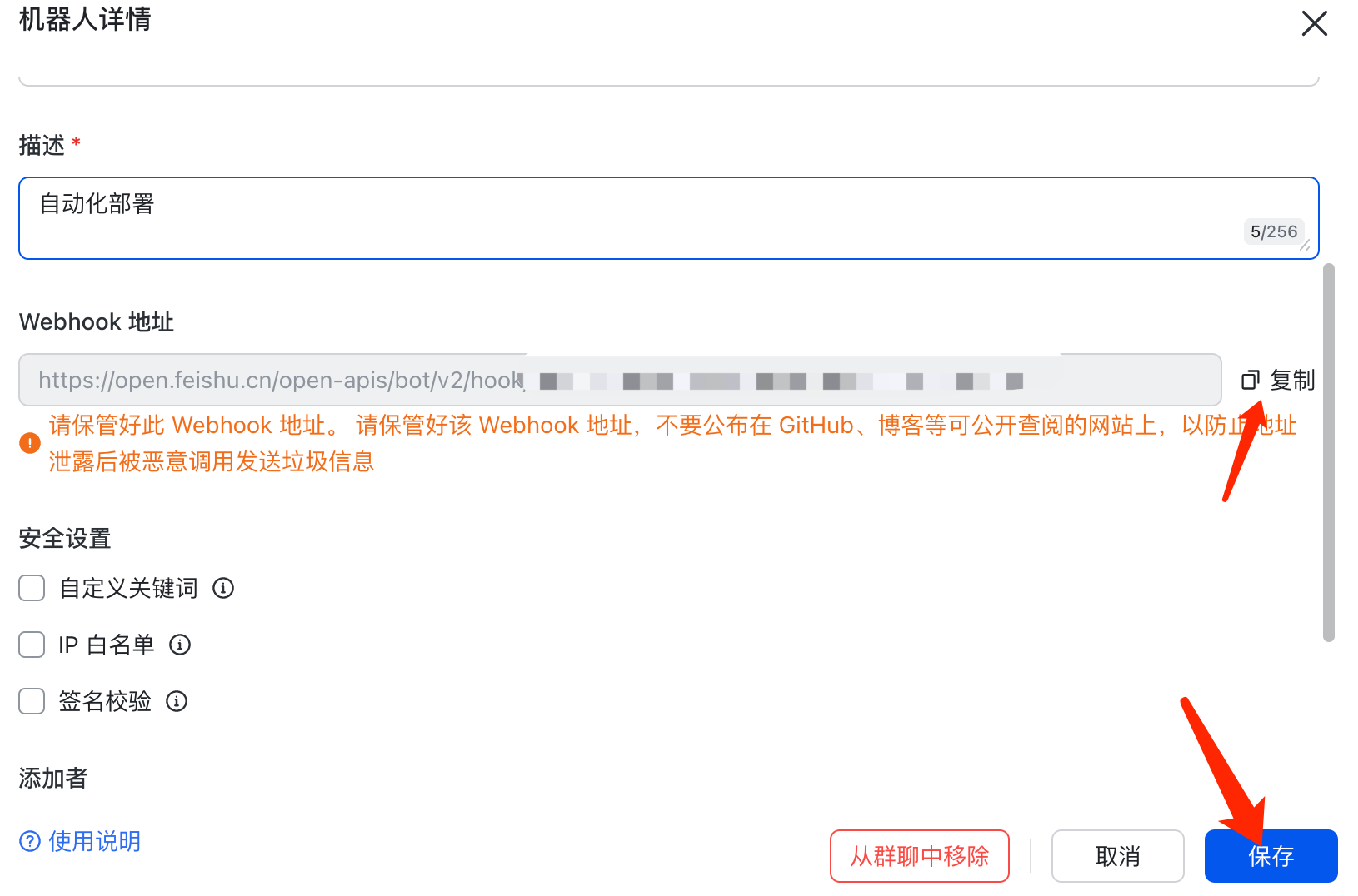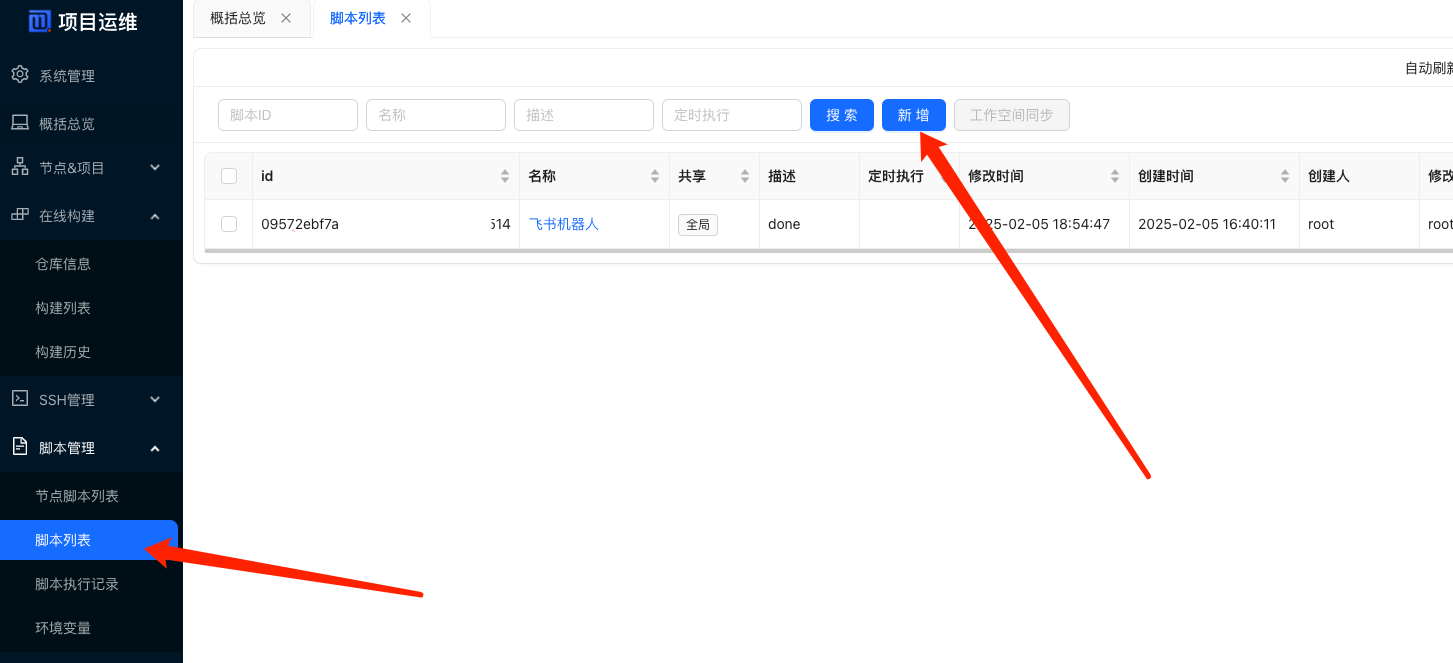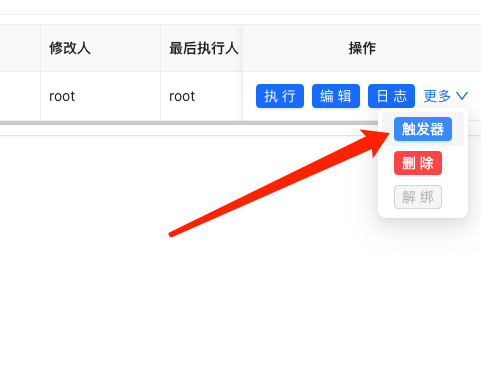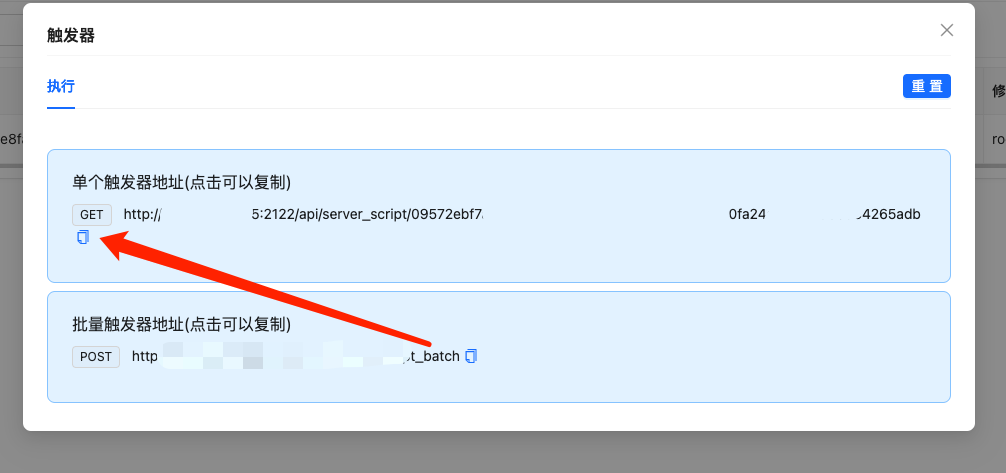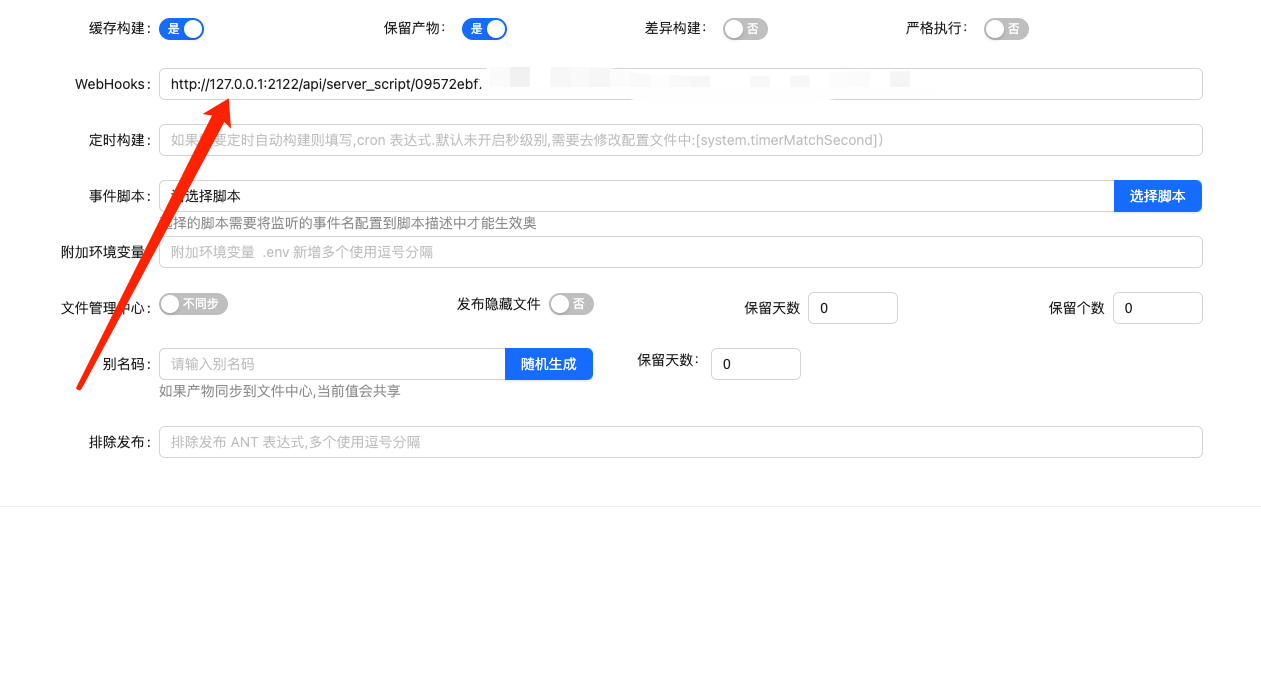JPOM构建通知到飞书 飞书添加机器人,并取得链接
jpom添加脚本
单机器人脚本 1 2 3 4 5 6 7 8 9 10 11 12 13 14 15 16 17 18 19 20 21 22 23 24 25 26 27 28 29 30 31 32 33 34 35 36 37 38 39 40 41 42 43 44 45 46 47 48 49 50 51 52 53 54 55 56 57 58 59 60 61 62 63 64 65 66 67 68 69 70 71 72 73 74 75 76 77 78 79 80 81 82 83 84 85 86 87 88 89 90 91 92 93 94 95 96 97 98 99 100 101 102 103 104 105 106 107 108 109 110 111 112 113 114 115 116 117 118 119 120 121 122 123 124 125 126 127 128 129 130 131 132 133 134 135 136 137 138 139 140 141 142 143 144 145 146 147 148 149 150 151 152 153 154 155 156 157 158 159 160 161 162 163 164 165 166 167 168 169 170 171 172 173 174 175 176 177 178 179 180 181 182 183 184 185 186 187 188 189 190 #!/bin/bash set -x # 设置时区为上海时区 export TZ="Asia/Shanghai" echo ">>> 脚本开始执行 <<<" ######################################自定义参数区域####################################### # Jpom链接 jpom_url="http://xx.xx:2122" # 飞书机器人 webhook 地址(请替换为你实际的地址) feishu_webhook="https://open.feishu.cn/open-apis/bot/v2/hook/token" # 如果需要,可以设置关注的事件标题或状态(数组),用于过滤特定消息 feishu_watch_titles=("监控告警") feishu_watch_status=("失败") ######################################自定义参数区域####################################### # URL编码函数(如需要链接中使用) urlencode() { local string="$1" local encoded="" local length="${#string}" for (( i = 0; i < length; i++ )); do local c="${string:i:1}" case "$c" in [a-zA-Z0-9.~_-]) encoded+="$c" ;; *) encoded+=$(printf '%%%02X' "'$c") ;; esac done echo "$encoded" } # 检查变量是否存在于数组中 array_contains() { local target="$1" shift local array=("$@") for item in "${array[@]}"; do if [ "$item" == "$target" ]; then return 0 # 存在返回 0 fi done return 1 # 不存在返回 1 } # 推送到飞书 function push_to_feishu() { # 参数:$1: title, $2: status, $3: name, 后续为内容数组 title="$1" status="$2" name="$3" shift 3 contents=("$@") cur_datetime=$(date +"%Y-%m-%d %H:%M:%S") # 构建消息内容(纯文本,换行用 \n) message="【${title}】\n" message+="项目:${name}\n" message+="状态:${status}\n" message+="时间:${cur_datetime}\n" message+="链接:${jpom_url}\n" for content in "${contents[@]}"; do message+="${content}\n" done echo ">>> 将发送的消息内容:" echo -e "${message}" # 构造 JSON 消息体 read -r -d '' json_payload <<EOF { "msg_type": "text", "content": { "text": "${message}" } } EOF echo ">>> JSON Payload: ${json_payload}" # 发送通知,并输出响应信息 response=$(curl -H "Content-Type: application/json" -X POST -d "${json_payload}" "${feishu_webhook}") echo ">>> 飞书响应: ${response} <<<" } # 通用推送函数 function common_push() { # 参数:$1: title, $2: status, $3: name, 后续为内容数组 title="$1" status="$2" name="$3" shift 3 contents=("$@") send_notify=1 if [ "${title}" == "监控告警" ]; then if ! array_contains "${title}" "${feishu_watch_titles[@]}" && ! array_contains "${status}" "${feishu_watch_status[@]}"; then send_notify=0 fi fi if [ ${send_notify} -eq 1 ]; then push_to_feishu "${title}" "${status}" "${name}" "${contents[@]}" else echo ">>> 消息未满足推送条件,不发送 <<<" fi } # 构建事件推送 function build_event_push() { echo ">>> 进入构建事件推送逻辑 <<<" echo "trigger_build_id: ${trigger_build_id}" echo "trigger_build_name: ${trigger_build_name}" echo "trigger_build_number_id: ${trigger_build_number_id}" echo "trigger_trigger_user: ${trigger_trigger_user}" echo "trigger_type: ${trigger_type}" title="构建通知" cur_datetime=$(date +"%Y-%m-%d %H:%M:%S") name="${trigger_build_name}" contents=( "任务:#${trigger_build_number_id}" # "项目:${trigger_build_name}" # "执行人:${trigger_trigger_user}" # "时间:${cur_datetime}" ) case "${trigger_type}" in "startReady" ) status="开始" common_push "${title}" "${status}" "${name}" "${contents[@]}" ;; "success" ) status="成功" common_push "${title}" "${status}" "${name}" "${contents[@]}" ;; "stop" | "error" ) status="失败" contents+=("\n错误信息:${trigger_status_msg}") common_push "${title}" "${status}" "${name}" "${contents[@]}" ;; * ) echo ">>> 未知的 trigger_type: ${trigger_type} <<<" ;; esac } # 监控事件推送 function monitor_event_push() { echo ">>> 进入监控事件推送逻辑 <<<" echo "trigger_monitor_id: ${trigger_monitor_id}" title="监控告警" cur_datetime=$(date +"%Y-%m-%d %H:%M:%S") name="${trigger_project_name}" contents=( "监控:${trigger_monitor_name}" "节点:${trigger_node_name}" "项目:${trigger_project_name}" "时间:${cur_datetime}" "内容:${trigger_title}" ) case "${trigger_run_status}" in "true" ) status="恢复" common_push "${title}" "${status}" "${name}" "${contents[@]}" ;; "false" ) status="异常" common_push "${title}" "${status}" "${name}" "${contents[@]}" ;; * ) echo ">>> 未知的 trigger_run_status: ${trigger_run_status} <<<" ;; esac } # 根据传入的环境变量判断调用哪种事件推送逻辑 if [ -n "$trigger_build_id" ]; then build_event_push elif [ -n "$trigger_monitor_id" ]; then monitor_event_push else echo ">>> 未检测到触发变量,执行默认测试调用 <<<" # 默认测试调用,测试飞书消息发送 push_to_feishu "测试标题" "测试状态" "测试项目" "测试内容1" "测试内容2" fi
多机器人脚本 1 2 3 4 5 6 7 8 9 10 11 12 13 14 15 16 17 18 19 20 21 22 23 24 25 26 27 28 29 30 31 32 33 34 35 36 37 38 39 40 41 42 43 44 45 46 47 48 49 50 51 52 53 54 55 56 57 58 59 60 61 62 63 64 65 66 67 68 69 70 71 72 73 74 75 76 77 78 79 80 81 82 83 84 85 86 87 88 89 90 91 92 93 94 95 96 97 98 99 100 101 102 103 104 105 106 107 108 109 110 111 112 113 114 115 116 117 118 119 120 121 122 123 124 125 126 127 128 129 130 131 132 133 134 135 136 137 138 139 140 141 142 143 144 145 146 147 148 149 150 151 152 153 154 155 156 157 158 159 160 161 162 163 164 165 166 167 168 169 170 171 172 173 174 175 176 177 178 179 180 181 182 183 184 185 186 187 188 189 190 191 192 193 #!/bin/bash set -x # 设置时区为上海时区 export TZ="Asia/Shanghai" echo ">>> 脚本开始执行 <<<" ######################################自定义参数区域####################################### # Jpom链接 jpom_url="http://xxx.xx:2122" # 飞书机器人 webhook 地址(请替换为你实际的地址) feishu_webhook="https://open.feishu.cn/open-apis/bot/v2/hook/token1" feishu_webhook2="https://open.feishu.cn/open-apis/bot/v2/hook/token2" # 如果需要,可以设置关注的事件标题或状态(数组),用于过滤特定消息 feishu_watch_titles=("监控告警") feishu_watch_status=("失败") ######################################自定义参数区域####################################### # URL编码函数(如需要链接中使用) urlencode() { local string="$1" local encoded="" local length="${#string}" for (( i = 0; i < length; i++ )); do local c="${string:i:1}" case "$c" in [a-zA-Z0-9.~_-]) encoded+="$c" ;; *) encoded+=$(printf '%%%02X' "'$c") ;; esac done echo "$encoded" } # 检查变量是否存在于数组中 array_contains() { local target="$1" shift local array=("$@") for item in "${array[@]}"; do if [ "$item" == "$target" ]; then return 0 # 存在返回 0 fi done return 1 # 不存在返回 1 } # 推送到飞书 function push_to_feishu() { # 参数:$1: title, $2: status, $3: name, 后续为内容数组 title="$1" status="$2" name="$3" shift 3 contents=("$@") cur_datetime=$(date +"%Y-%m-%d %H:%M:%S") # 构建消息内容(纯文本,换行用 \n) message="【${title}】\n" message+="名称:${name}\n" message+="状态:${status}\n" message+="时间:${cur_datetime}\n" # message+="链接:${jpom_url}\n" for content in "${contents[@]}"; do message+="${content}" done echo ">>> 将发送的消息内容:" echo -e "${message}" # 构造 JSON 消息体 read -r -d '' json_payload <<EOF { "msg_type": "text", "content": { "text": "${message}" } } EOF echo ">>> JSON Payload: ${json_payload}" # 发送通知,并输出响应信息 response=$(curl -H "Content-Type: application/json" -X POST -d "${json_payload}" "${feishu_webhook}") echo ">>> 飞书响应: ${response} <<<" response2=$(curl -H "Content-Type: application/json" -X POST -d "${json_payload}" "${feishu_webhook2}") echo ">>> 飞书响应2: ${response2} <<<" } # 通用推送函数 function common_push() { # 参数:$1: title, $2: status, $3: name, 后续为内容数组 title="$1" status="$2" name="$3" shift 3 contents=("$@") send_notify=1 if [ "${title}" == "监控告警" ]; then if ! array_contains "${title}" "${feishu_watch_titles[@]}" && ! array_contains "${status}" "${feishu_watch_status[@]}"; then send_notify=0 fi fi if [ ${send_notify} -eq 1 ]; then push_to_feishu "${title}" "${status}" "${name}" "${contents[@]}" else echo ">>> 消息未满足推送条件,不发送 <<<" fi } # 构建事件推送 function build_event_push() { echo ">>> 进入构建事件推送逻辑 <<<" echo "trigger_build_id: ${trigger_build_id}" echo "trigger_build_name: ${trigger_build_name}" echo "trigger_build_number_id: ${trigger_build_number_id}" echo "trigger_trigger_user: ${trigger_trigger_user}" echo "trigger_type: ${trigger_type}" title="test环境构建通知-多机器人测试" cur_datetime=$(date +"%Y-%m-%d %H:%M:%S") name="${trigger_build_name}" contents=( # "任务:#${trigger_build_number_id}" # "项目:${trigger_build_name}" "执行人:${trigger_trigger_user}" # "时间:${cur_datetime}" ) case "${trigger_type}" in "startReady" ) status="开始构建" common_push "${title}" "${status}" "${name}" "${contents[@]}" ;; "success" ) status="构建成功" common_push "${title}" "${status}" "${name}" "${contents[@]}" ;; "stop" | "error" ) status="构建失败" contents+=("\n错误信息:${trigger_status_msg}") common_push "${title}" "${status}" "${name}" "${contents[@]}" ;; * ) echo ">>> 未知的 trigger_type: ${trigger_type} <<<" ;; esac } # 监控事件推送 function monitor_event_push() { echo ">>> 进入监控事件推送逻辑 <<<" echo "trigger_monitor_id: ${trigger_monitor_id}" title="监控告警" cur_datetime=$(date +"%Y-%m-%d %H:%M:%S") name="${trigger_project_name}" contents=( "监控:${trigger_monitor_name}" "节点:${trigger_node_name}" "项目:${trigger_project_name}" "时间:${cur_datetime}" "内容:${trigger_title}" ) case "${trigger_run_status}" in "true" ) status="恢复" common_push "${title}" "${status}" "${name}" "${contents[@]}" ;; "false" ) status="异常" common_push "${title}" "${status}" "${name}" "${contents[@]}" ;; * ) echo ">>> 未知的 trigger_run_status: ${trigger_run_status} <<<" ;; esac } # 根据传入的环境变量判断调用哪种事件推送逻辑 if [ -n "$trigger_build_id" ]; then build_event_push elif [ -n "$trigger_monitor_id" ]; then monitor_event_push else echo ">>> 未检测到触发变量,执行默认测试调用 <<<" # 默认测试调用,测试飞书消息发送 push_to_feishu "测试标题" "测试状态" "测试项目" "测试内容1" "测试内容2" fi
保存后获取回调地址
到构建中设置回调
把之前脚本的回调地址粘贴到WebHooks中,注意!如果是在一台服务器中,用内网地址,别用外网地址,否则可能会连接超时导致触发不了!

